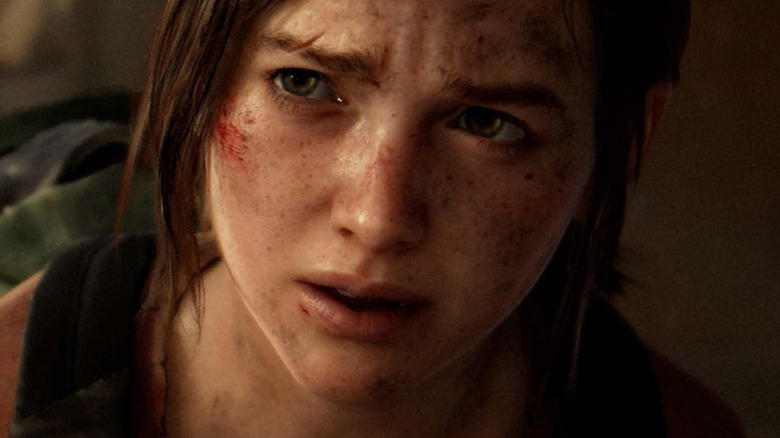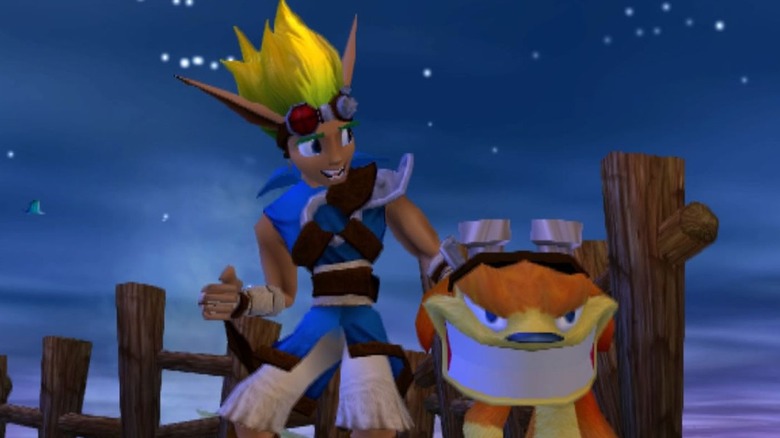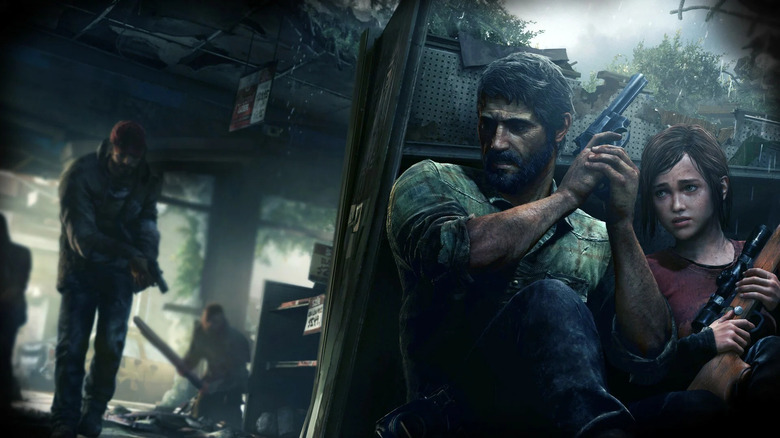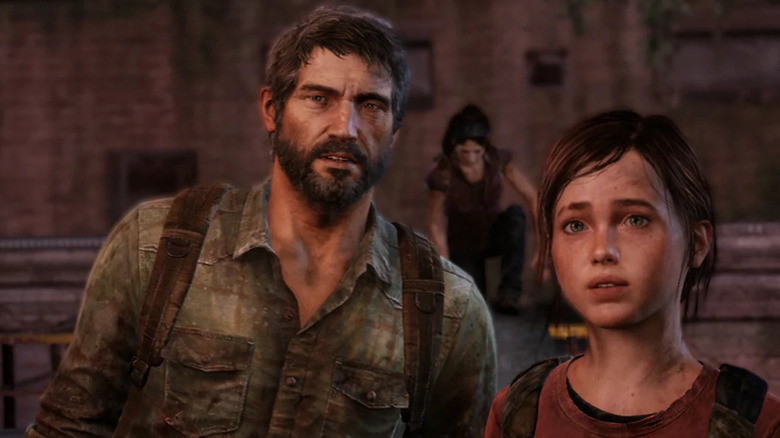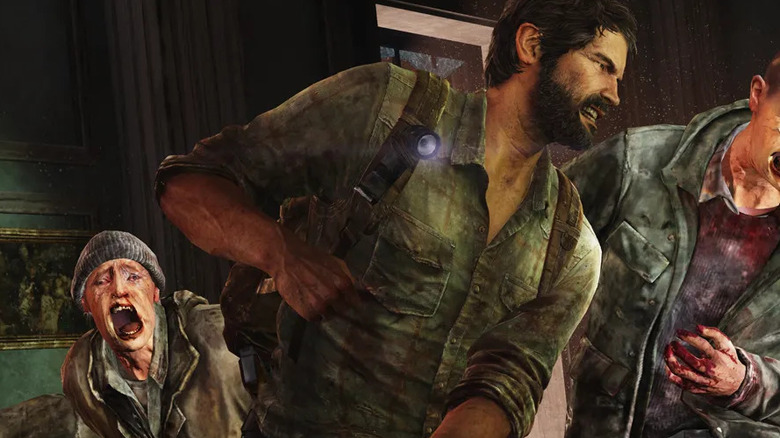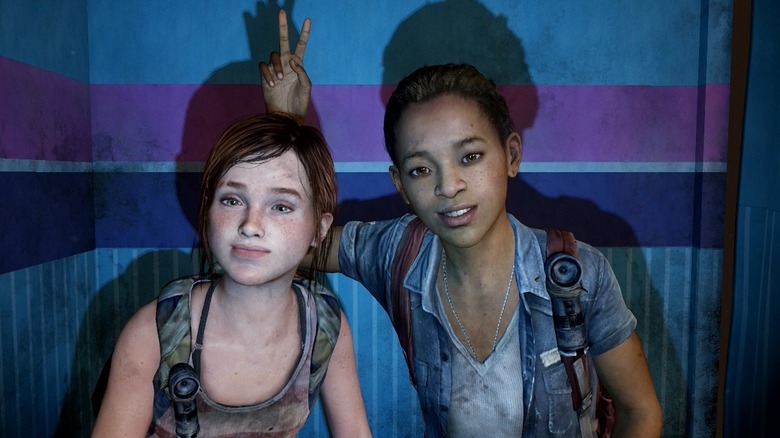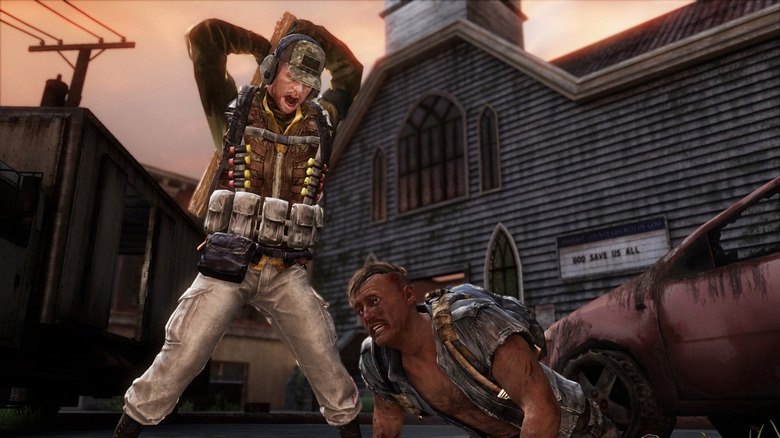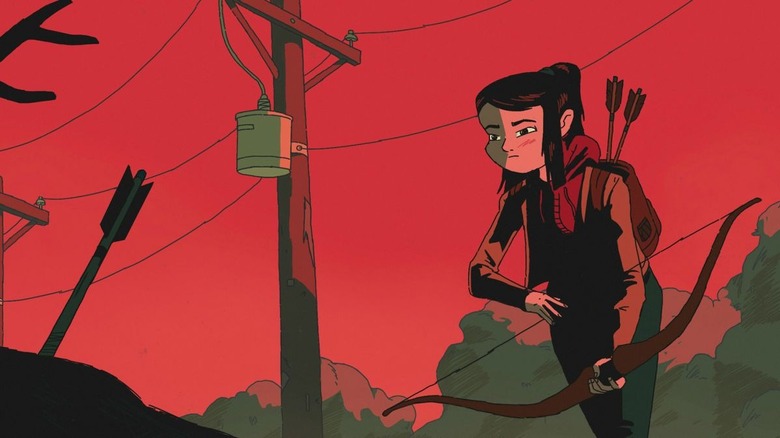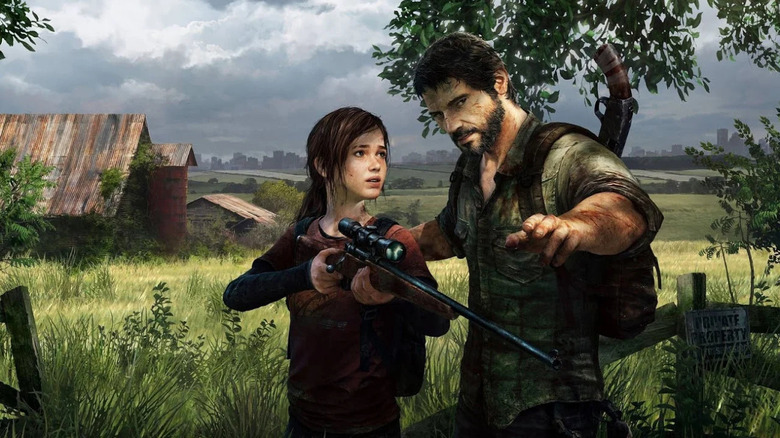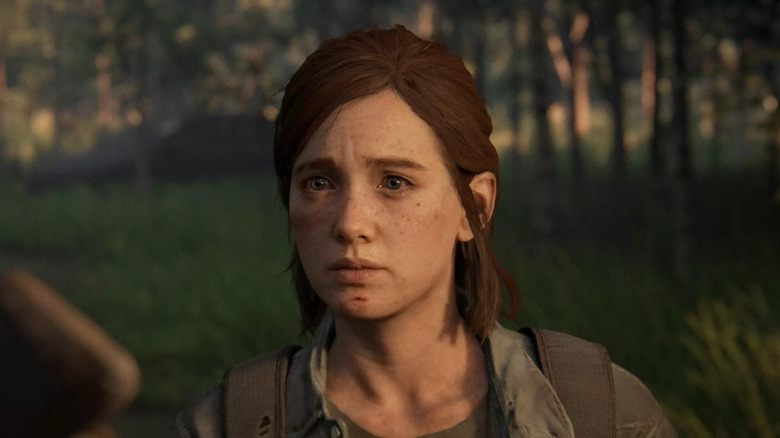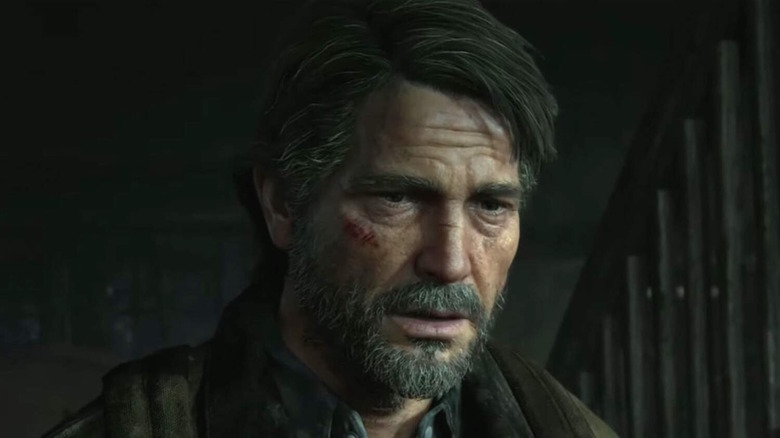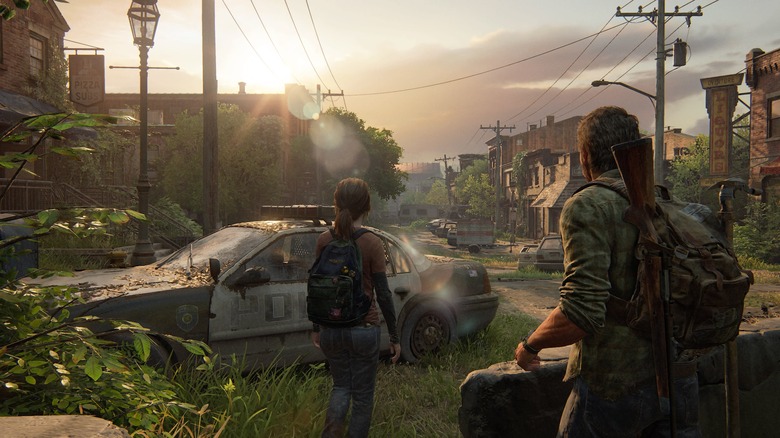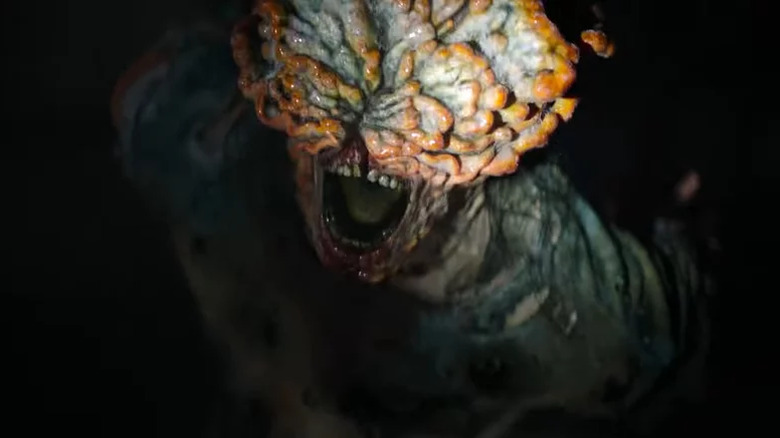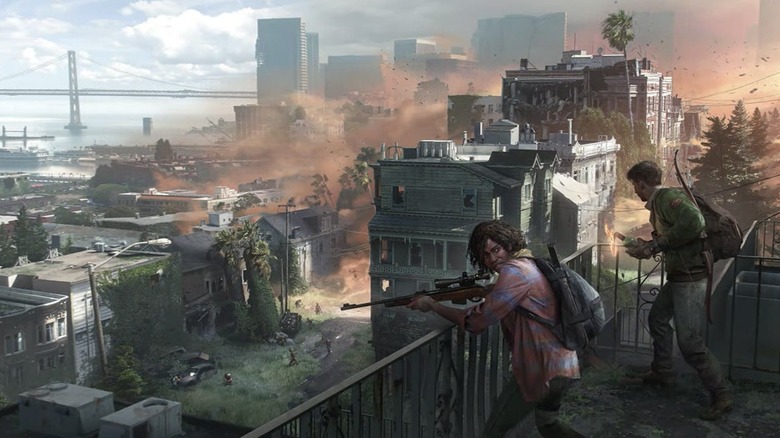The Stunning Transformation Of The Last Of Us
Sony has an incredibly strong library of first party titles that it has built over its generations of consoles. One of its youngest first party series is "The Last of Us." Despite this, the games have had a massive impact on the games industry. Developed by industry veteran studio Naughty Dog, the series is beloved for its intricate storytelling, level design, deeply realized characters, and its breathtaking technological advancements with each release.
With all of these positives behind it, it makes sense that "The Last of Us" has become a cornerstone of the games industry. Over the nine years of its existence, the series has gone on to evolve and transform with the times, offering a unique experience to new players and retooling the core gameplay for longtime fans. Here is how Naughty Dog's "The Last of Us" has transformed over the years and cemented its place in gaming history.
A new age for Naughty Dog
The development of the first "Last of Us" title was a big moment for Naughty Dog. The studio was best known for platformers like "Crash Bandicoot" and "Jak and Daxter" before expanding its reputation with the early entries in the "Uncharted" series. As the studio began pre-production on "The Last of Us," it became clear that it would be unlike anything else the team had released up to that point. It was going to have a darker tone than their previous titles, put a heavy emphasis on its characters and narrative, and thematically challenge players.
Early development of the game, however, also challenged Naughty Dog in structural ways. "The Last of Us'" development began in 2009, just after the release of "Uncharted 2." Since the studio was also working on "Uncharted 3," it became necessary for it to split into two separate teams for the first time in its history (per IGN). This introduced new challenges for both teams and Naughty Dog to grow to equally support the development of two AAA titles at a time. With "Uncharted 3" development being led by Richard Lemarchand and "The Last of Us" by Jacob Minkoff, Naughty Dog ushered in a new era at the studio.
A dark and heavy story
"The Last of Us" is set in a post-apocalyptic world that has been ravaged by a mutated fungus that turns humans into shambling horrors that are aggressive toward any living thing. The opening scene of the game shows players the sheer chaos the fungus unleasjes on humanity, eventually eroding the foundations of civilization. This sets up the game's incredibly dark story, filled with tragedy, sorrow, and violence. "The Last of Us" even starts with one of the main characters, Joel, seeing his daughter get shot and killed in his arms as they flee their home in Austin, Texas.
Although the game's narrative is extremely dark, it uses that tonal space to explore various themes that help keep players engaged in the plot and prevent the story from becoming too wearisome. As noted by IGN, "The Last of Us" has a narrative that is extremely dense and mature, ripe with quietly emotional moments that stay with players long after they put down their controller. This maturity played a large role in the game reaching the classic status that it currently enjoys.
Deep and rich characters
The story in "The Last of Us" is also supported by the game's fantastic cast of fully realized characters. Players form deep connections with the main characters of Joel and Ellie as they play through the title and see the two form a bond. It becomes almost impossible for players to not start rooting for them. This connection is then tested through decisions that the characters make, many of which have very questionable moral implications. However, these decisions are also understandable to players because of the characters' established backgrounds and views. Even so, players have continued to debate these points for years.
Even side characters feel fleshed out and are fueled by fantastic performances. Characters like Tommy and Marlene both have compelling motivations and interactions that help them match up to the likes of Joel and Ellie in shared scenes. They are so well-defined that even when they work in opposition to Joel and Ellie, they never fulfill the role of pure antagonist. The world of "The Last of Us" isn't one of binary heroes and villains in most cases.
No one way to fight in The Last of Us
With how dark and ruthless the world of "The Last of Us" is, it is important for its combat to match the tone — and it definitely does. Encounters can be split into two approaches, depending on which type of enemy Joel and Ellie are facing. The first is when players encounter humans infected with the fungus, especially the ones called clickers. Since clickers can easily overpower Joel, these encounters place a heavy emphasis on stealth. While clickers are unable to see they possess strong hearing, forcing players to focus on staying quiet and killing them with sneak attacks rather than staying out of their line of sight. Of course, some of the infected are bigger and badder than others, and in those cases, extreme force is the only option.
Players also have to contend with groups of other survivors who are willing to do whatever it takes to get by. Since Joel and Ellie are usually outnumbered in these sequences, players might want to start with a stealth approach before switching to cover fire. However, resources are extremely limited, which pushes players to quickly craft gear, conserve ammunition, and react to the enemy AI keeping them on their toes.
Expanding Ellie's character
Shortly after the release of "The Last of Us" it received a DLC titled "Left Behind." The DLC was very well received by critics and expands Ellie's character. While the DLC does slightly expand Joel and Ellie's story together, the main focus of the DLC is a prequel story between Ellie and a friend of hers named Riley. It takes place just a short while before "The Last of Us" begins and provides a fun, slice of life story that is more light-hearted than the majority of the main game's narrative. Players follow Ellie and Riley as they goof around and the DLC even re-contextualizes some of the game's mechanics in a more childish way, like a water gun fight.
The DLC does turn dark, however, as the two are attacked by a horde of clickers after kissing one another. While running away and fending them off they are both bitten and ultimately decide to spend their final hours before they turn with one another. This is where Ellie discovers that she is immune, setting up the main game's entire storyline. The DLC's story also fleshes out Ellie's backstory, making her an even more interested and complicated character for players to explore and relate to.
A fitting multiplayer
"The Last of Us" also launched with "Factions," a multiplayer offering that received a lot of praise when the game first released. This portion of the game sees players facing off against one another in small teams across a couple different game modes. The multiplayer's combat highlights the brutality and high stakes of the game's world, complete with a very low time to kill. Throughout matches, players also have to scavenge for resources and craft items on the fly, including improvised grenades and improved melee weapons. Crafting during matches really hammers home how tense the world of "The Last of Us" is, as players have to constantly scrounge for ingredients and do whatever it takes to survive.
Players have to pick between representing two factions — either the Fireflies or Hunters — and they must keep their group alive using resources that are rewarded based on their performance in matches. The servers for the PlayStation 3 version of the game were shut down in 2019, leaving only the PlayStation 4 remaster's servers online, where players are still enjoying the fight.
Failed adaptations
After "The Last of Us" became a global smash hit, it was no surprise when talks began of translating its cinematic presentation in other media. This first took the form of a traditional Hollywood movie with the game's lead writer, Neil Druckmann, being tapped both as an executive producer and as the screenwriter. The movie progressed far enough for the script to receive a few revisions and for table reads with the cast to be held. However, it was cancelled quite suddenly. It was eventually revealed by Druckmann that he couldn't reach an agreement with Sony, which wanted the movie to have more bombastic action sequences than he felt necessary.
It was later revealed that "The Last of Us" also came close to receiving an animated short film. Screenshots from the short film were eventually leaked, as well as some information regarding its plot and style. According to a report from GamesRadar, the short film was intended to act as a retelling of the game's story, with the addition of some smaller beats. The short would act as an introduction to the story for new players who were interested in jumping into the series with "The Last of Us Part 2." Each chapter of the game was going to be animated with a unique visual style, but the project was eventually canceled.
The first remaster
A remaster of "The Last of Us" was released for the PlayStation 4 in 2014. The remaster incorporated various technical advancements to make it more accessible and bring it to next-gen standards. These tweaks included universal lighting improvements, a higher framerate, and a better draw distance. One of the most universally praised improvements, however, was the how much the remaster cut down the game's loading times. "The Last of Us Remastered" was very well received by critics and players alike, and for many fans became the definitive way to experience the game.
However, some did not find it to be entirely worth buying a second time, since the remaster's improvements were only graphical in nature. The remaster did include the "Left Behind" DLC and "Factions," however, so it served as a solid way for brand new players to jump into the series and experience everything that it had to offer up to that point.
The Last of Us Part 2's evolution
"The Last of Us Part 2" was released for the PlayStation 4 in 2020, continuing Ellie's story five years after the events of the first game. While exploring a new range of themes and character depth, it also introduced new mechanics and a number of technological and quality of life improvements. The game's accessibility settings were some of the best yet seen at the time and its graphics looked like a next gen title before it was even available on the PlayStation 5. "The Last of Us Part 2" also included an evolution of the first game's combat systems, complete with improved enemy AI and a detailed weapon upgrade system that allowed players to customize their approach to encounters.
All in all, "The Last of Us Part 2" was very well received by critics, despite being divisive amongst fans due to the twists in its storyline (some of which were spoiled when they leaked online before release). The game went on to perform extremely well at 2020's Game Awards, where it swept several major categories and won Game of the Year, beating out titles like "Final Fantasy 7 Remake," "Doom Eternal," and "Hades."
New and developed characters
"The Last of Us Part 2" makes full use of its established characters and setting in exploring new themes of vengeance and the cycle of violence. The main characters are put through new trials and challenges that aid in further exploring their personalities and how they deal with the challenging world they inhabit. New characters are also introduced during the story that help flesh out the world and act both as thematic compliments and foils to Ellie's journey through revenge and violence.
The quality of the sequel's writing has inspired much discussion and analysis in the years following its release. The level of violence in the game has particularly caused a great deal of debate, while Ellie and Abby offer players a wide range of complicated emotions that challenge the player's willingness to participate in brutal enemy encounters. The narrative does not always go where players may hope that it does, but it is an intricately crafted journey filled with emotional depth and subtle development for every character.
The second remaster
With the release of the PlayStation 5, it came time for a second modernizing of the first game in the series, which led to "The Last of Us Part 1." The remake received a lot of positive reactions from fans and critics who praised the technical advancements applied to the new release. The developers took this opportunity to rebuild many of the game's core systems to allow for improved detailing and animations. While this system did change the appearances of some of the game's characters, the game's animations look absolutely incredible, especially when it comes to the depth of emotion in character faces. "The Last of Us Part 1" also introduced new accessibility features akin to "The Last of Us Part 2," which were much appreciated.
However, the remake did receive some pushback from news outlets and fans of the series. These complaints were primarily fueled by the feeling that Sony was releasing the remake to capitalize on the series' popularity to make a quick buck. Some critics have also argued that the game, though billed as a remake by Naughty Dog, felt more like a remaster in the vein of 2014's re-release of the first entry.
A successful adaptation
After years of false starts, there is a live action adaptation of "The Last of Us" on the way, and it's shaping up to be quite faithful to the games. With Neil Druckmann acting as executive producer and a writer and "Chernobyl" creator Craig Mazin as showrunner, "The Last of Us" is making the jump to being an HBO series. Pedro Pascal, Bella Ramsey, and Nick Offerman are among the star-studded cast, playing Joel, Ellie, and Bill, respectively.
The trailers for the show have been filled with a number of small details that illustrate how seriously the production is taking the task of adapting the games. Even the look of the horrifying clickers is impressive. It's no wonder that hype is steadily building amongst fans. While it's still a bummer that previous attempts were canceled, it seems very likely that fans will finally get the adaptation they have been waiting for when HBO's "The Last of Us" premieres in 2023.
What the future could hold for The Last of Us
Though Naughty Dog has confirmed that it is developing a standalone multiplayer experience in the series, not much is known about it. What is known is that Naughty Dog has greatly expanded its workforce to accommodate the game's development. Neil Druckmann confirmed during 2021's Summer Games Fest opening night livestream that it will have its own story of some kind, and that it had grown to become something so much more than originally intended. In fact, it may be comparable in size to other Naughty Dog titles.
The standalone title was originally planned as a multiplayer mode for "The Last of Us Part 2" that would be added after its release, but the scope of the project continued to grow as the developers worked. Eventually, "Factions 2" evolved into its own entity.
Apart from that, the future of "The Last of Us" is largely unknown. Neil Druckmann has mentioned preliminary sequel plans in interviews over the last couple of years, but nothing has been formally announced. Given the release of previous remasters and updates, it seems likely that as new PlayStation hardware is released, the "Last of Us" games will receive upgrades to bring them up to the newest standards. Fans will simply have to wait and see where Ellie's journey takes her next.

